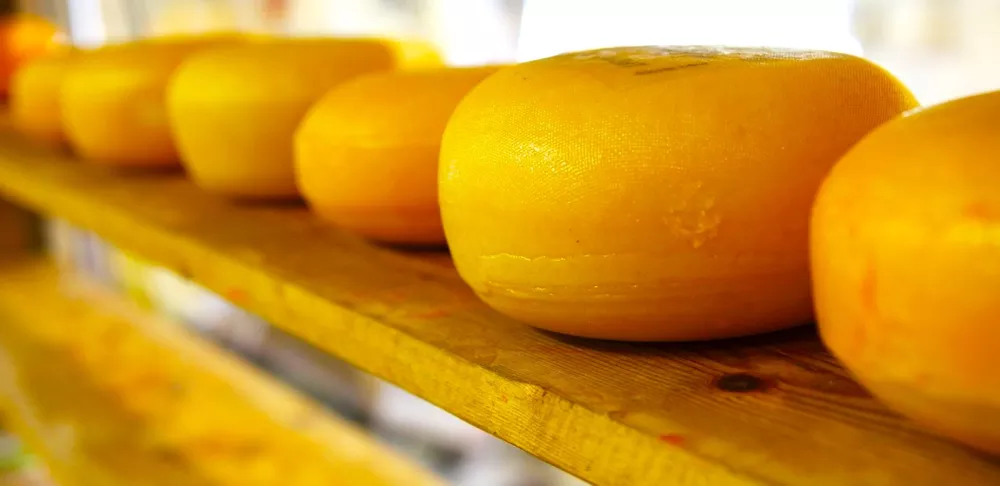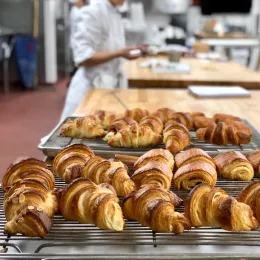When you think about it, cheese has a lot of spooky sensibilities going for it.
“Cheese is milk’s leap toward immortality” — a quote from American poet John Updike — more eloquently expresses an idea that, at its essence, cheese is just milk in a suspended state of slow decay. Microorganisms are harnessed by cheesemakers, and mold is effectively farmed in caves to turn milk from something with only brief staying power into something preserved for a longer lifespan. Vampires, zombies, mummies, cheese: all things that represent the possibility of life after death.
Just ahead of the official holiday entertaining season, the end of October is teeming with hosting potential, and cheese is a perfect, naturally thematic element for any spooky celebrations. While a case can be made for just about any cheese to attend your costume party, certain cheeses are just more ripe for the occasion.
The orange, the black, and the brainy: here are the best cheeses to consider for your Halloween cheese board.
Annatto-Tinted Cheeses: Orange
While many of us are introduced to cheese in the form of bright orange cheddars or American singles, orange-hued cheeses do not represent the vast majority of artisanal cheeses. There is precedent for cheeses that are this color, however, that goes beyond American industrial production. Using annatto seed, a carotenoid that comes from the Central American achiote tree, cheesemakers in certain regions have been dying their cheeses orange for centuries.
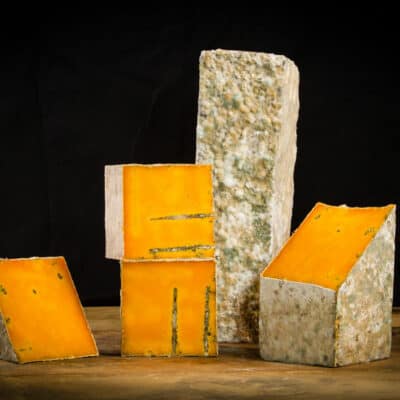
There are numerous reasons why cheesemakers began using annatto to alter cheese's natural color. One theory is that cheesemakers began adding annatto to batches of milk that were collected in the winter, to approximate the beta carotene that would be naturally present in cheese made during the summer months when herds graze on fresh grasses. Another theory is that unscrupulous cheesemakers may have been skimming some of the butterfat from their batches of milk to use in other products. In order to make the resulting skimmed-milk cheeses look richer, annatto was added. It’s also possible that in places where numerous makers were creating the same style of cheese — the village of Cheddar in England, for example — wheels were dyed just as a point of differentiation.
Related: Culinary Uses of Firm Cheeses
Annatto seed is natural, but relatively flavorless, and is considered a valid ingredient in cheese. Similar to turmeric or saffron in character, a little bit imparts a tremendous amount of color. You don’t need to turn to industrially-produced blocks for your Halloween-themed cheese board, as many artisanal or traditional cheese makers still use annatto in the making of cheeses in a variety of styles.
Cheeses to try:
- Mimolette
- Shropshire Blue
- Roelli Cheese Haus Red Rock
- Sparkenhoe Mature Red Leicester
- Cosanella
- Brebirousse d’Argental
Ash-Ripened Cheeses: Black
Long before activated charcoal cocktails and squid ink linguini became popular, cheesemakers were employing ash in the making of various cheeses, resulting in wheels with a distinctly goth, haunted appearance. While black mold is a sign of something gone wrong in cheese, a halo of black vegetable ash indicates other characteristics.
Most commonly found in French or French-inspired goat’s milk cheeses, the primary function of vegetable ash in cheesemaking is to raise the pH on the surface of the cheese to allow beneficial microbes to grow. Ash can also lower the moisture content on the surface of the cheese, to inhibit the growth of undesirable organisms.
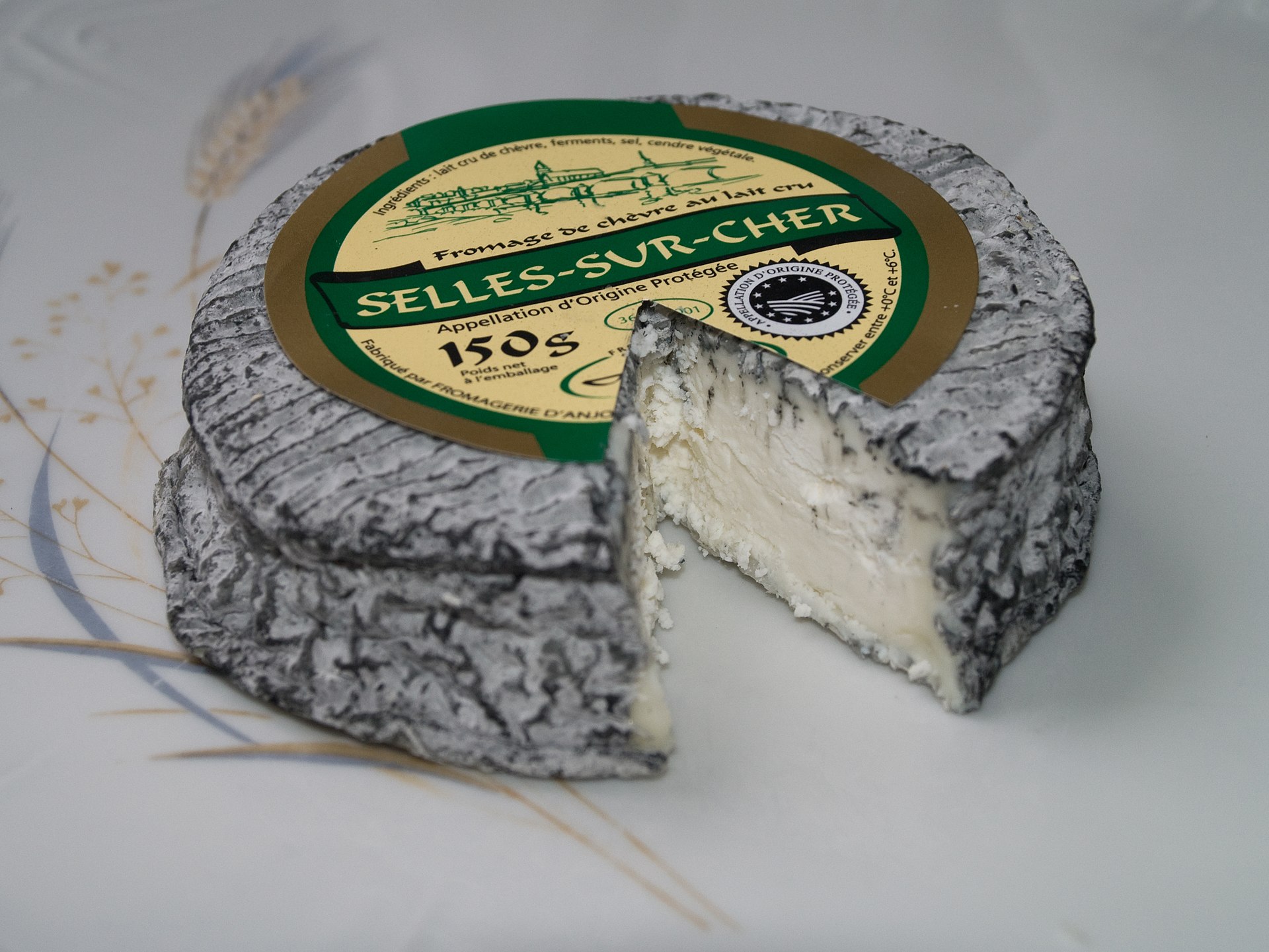
Cheeses such as Morbier or Humboldt Fog that have a black ash stripe in the center of the cheese represent historical styles. Many cheeses are made with numerous batches of milk, collected both in the morning and in the evening. Curds that were made in the morning were sprinkled with ash as a preservative and insect repellent to await the addition of the evening milking, hence the center stripe.
Cheeses to try:
- Sottocenere
- Firefly Farms Mountain Top
- Cypress Grove Humboldt Fog
- Selles-Sur-Cher
- Valencay
- Sainte-Maure
- Morbier
Geo-Rind Cheese: Brainy
The world of bloomy rind or soft-ripened cheeses is varied, with a number of different microbial cultures applied that can create delicate, toothsome rinds that contribute both flavor and texture to cheeses. While traditional bloomy wheels such as brie and camembert can effectively be carved into Halloween-friendly shapes, other soft cheeses can take on brain-like appearances.
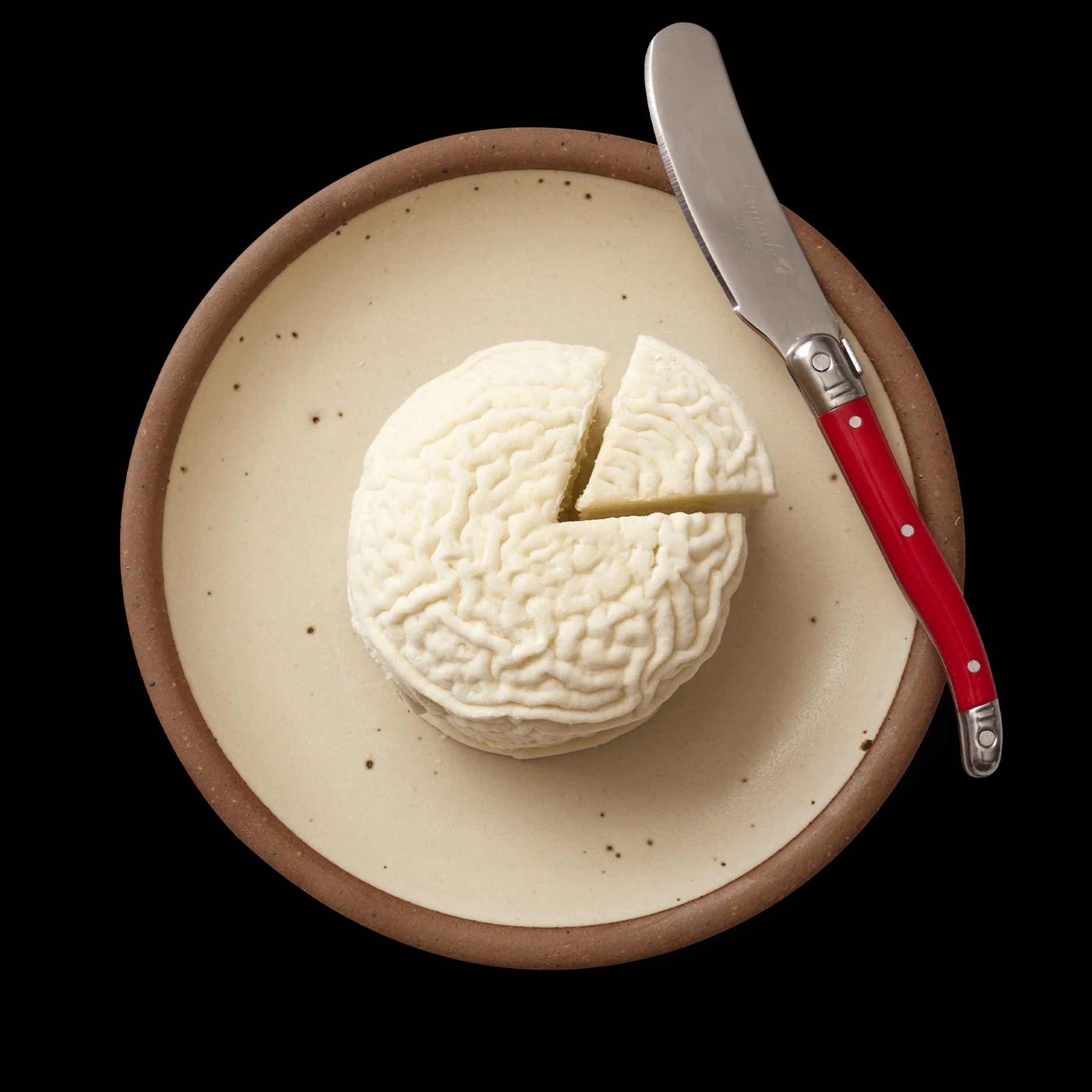
Cheeses with soft, mottled exteriors that resemble brain matter have a strain in common: geotrichum candidum. Geo-rind for short, this culture is actually a yeast-like fungus that develops on the surfaces of cheeses, reducing bitterness, promoting earthy aromas, and developing into brainy folds that make it another ideal candidate for a Halloween cheese platter.
Pro tip: brush any of the following geo-rind cheeses with a red fruit preserve for a distinctly bloody effect.
Cheeses to try:
- Perrystead Dairy Intergalactic
- Chabichou
- Blakesville Creamery Shabby Shoe
- Vermont Creamery Coupole
- La Tur
- Langres
Expand Your Cheesy Horizons: Understanding Fresh Cheeses and Their Culinary Uses



